
OR
live it up
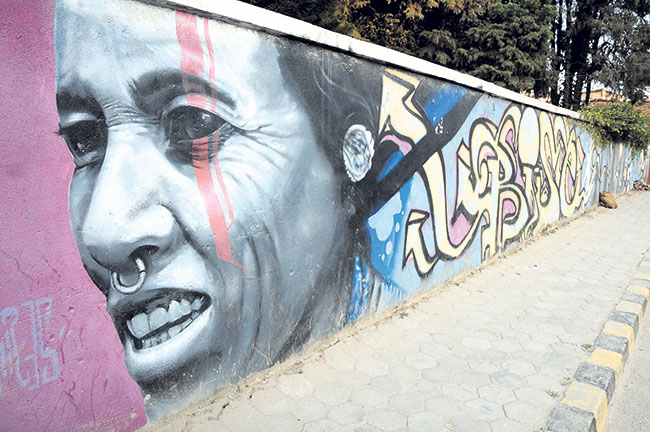
Anonymous street artists in Kathmandu have transformed many dull streets of the valley into a vibrant one. Knowingly or unknowingly, legal or illegal, these masterpieces powerfully depict the underlying culture, politics, and history of our country. Often known as murals, urban art or graffiti, most of these street arts have become a center of attraction for many tourists in Kathmandu.
It’s easy for us to just click a picture of a wall art and upload it on social media when we come across one. But let’s admit it, we rarely take out time to understand the message it is meant to convey. We at The Week have tried to connect you with the ‘real’ artists behind these anonymous murals. Here you will get to know about their journey and their struggles. Read more to find out interesting stories behind some outstanding work of art aimed not only to brighten up our streets and delight us but also to bring about some much-needed change.
All about giving
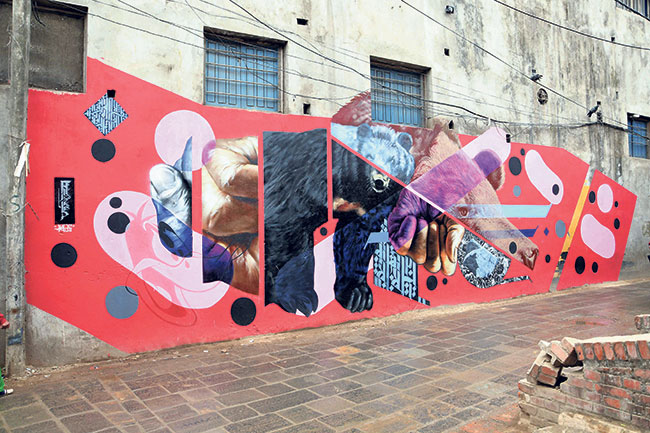 Kiran Maharjan is involved in conducting numerous workshops along with his usual street painting. “We have an organization named Art Lab which conducts profit based as well as not profit making workshops,” says Maharjan. Till today, he has conducted many classes and workshops for street art enthusiasts in Birgunj, Pokhara, Dharan, and even abroad in Denmark.
Kiran Maharjan is involved in conducting numerous workshops along with his usual street painting. “We have an organization named Art Lab which conducts profit based as well as not profit making workshops,” says Maharjan. Till today, he has conducted many classes and workshops for street art enthusiasts in Birgunj, Pokhara, Dharan, and even abroad in Denmark.
However, when Maharjan started creating these art pieces there was no one to guide him. It was a self teaching and self learning process. “I used to do a lot of research through the internet and I also learnt from my own mistakes,” he says. It may have taken more than seven years to perfect this form of art, but today he is known as one of the finest street artists in Kathmandu.
Every street art that Maharjan makes has an underlying theme. He primarily focuses on human existence and the struggles of being a human. “I do not like focusing on issues such as caste or religion because these are just man made demarcations. At the end of the day, we all are humans,” says Manandar. He also likes making realistic paintings that are a mixture of traditional as well as modern art forms. He occasionally creates arts that are an indirect satire to the existing government and politicians.
Maharjan fondly remembers making his most appreciated art on the wall of American Embassy Recreation Center. “Most of you may have noticed Martin Luther King wearing a Dhaka topi on the street that leads to towards Durbar Marg from Thamel. We first
designed that image on a laptop. It then had to be projected on a wall at night. We took special permission from police to block that part of the road from 11:00 pm to 2:00 am. That is how the outline of that mural was created,” says Maharjan.
Having come this far, Maharjan now wants to travel the world in the future and
take part in street art festivals. “I want to travel, teach, and learn at the same time,” he says adding that he also intends to find various creative ways to display street art for the public.
The magic in art
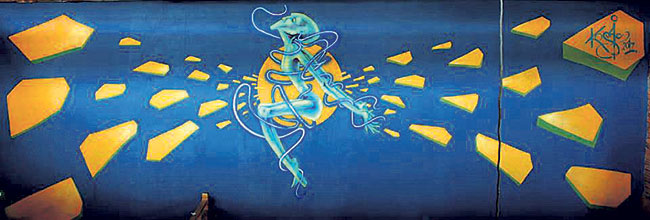 Sanjay Dangol is popularly known as Kosmic on the streets of Kathmandu. He strongly believes in the power of art and the magic it can create. “Street art is what I live for and I know it is magical,” says Dangol.
Sanjay Dangol is popularly known as Kosmic on the streets of Kathmandu. He strongly believes in the power of art and the magic it can create. “Street art is what I live for and I know it is magical,” says Dangol.
As a teenager, Dangol loved painting and crafting something new. Hence, he used to sneak out of his house at night with his friend to make wall art in his neighborhood. “Those days, we used stencils to create tiny wall arts. We were still learning and free hand painting was a bit too difficult for us,” says Dangol. He also fondly remembers saving his pocket money to buy paint and spray cans. “I had a group of friends and together we used to save up our tiffin money and collectively buy cans and stencils to paint,” he adds.
He also joined an art school against the wishes of his parents and relatives. “My relatives expected me to pursue my higher studies in medical science. They obviously did not know what I was capable of,” says Dangol smiling. “After years of constant struggle, now I guess I have been able to build a reputation for myself,” says Dangol.
Talking about magic, there have been many instances in Dangol’s life that made him believe in it. “I remember going out one night to paint a wall with my friend. We had a huge utensil with us, and many street dogs felt threatened by it. Stray dogs started barking and attacking us. Suddenly, a dog came out from one of the houses and started shooing other dogs away. He escorted us to our destination safely and went away after that,” says Dongol. “That dog was like a god sent angel for us,” he adds.
Dangol also remembers sitting down on his bed, trying to paint a hen committing suicide. He tried drawing it but was not satisfied with the outcome. All of a sudden he heard a rattling noise on his terrace, only to find that his dog had killed a chick. He then hung the dead chick on his wall and completed his masterpiece.
He also remembers creating a mural on a four-storied building along with his team. A bamboo ladder was used for the same. “I was on top of the ladder creating a moon at the fourth floor and a part of my ladder broke creating an awful noise,” says Dangol. “It was a near death experience but I was saved because half the ladder was still intact,” he concludes.
Social work of a different kind
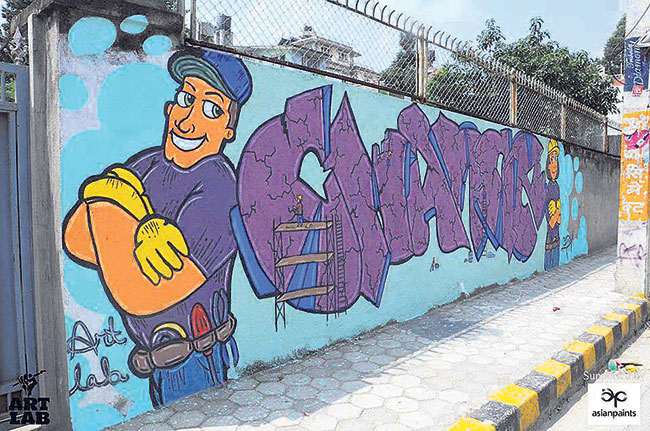 “People ask you different kinds of questions when you make a wall art. The most shocking one for me was: Why are you dirtying the wall? Go and do some social work.” says Amogh Parajuli adding that his wall arts have different themes and messages that he wants to convey to the society. “For me, this is also a different kind of social work and, what’s more, I’m making the streets of my city more attractive in the process,” adds Parajuli.
“People ask you different kinds of questions when you make a wall art. The most shocking one for me was: Why are you dirtying the wall? Go and do some social work.” says Amogh Parajuli adding that his wall arts have different themes and messages that he wants to convey to the society. “For me, this is also a different kind of social work and, what’s more, I’m making the streets of my city more attractive in the process,” adds Parajuli.
Parajuli’s inspiration was his mother who is an artist herself. “She taught me the basics of art and has always encouraged me to pursue art as my career,” he adds. He is currently pursuing Bachelors in Arts from Kathmandu College of Fine Art and is also involved in making various graffiti and murals around the city.
One of his most memorable street arts is named ‘Pahichan’ which depicts an old man carrying a ladder. “The painting conveys the message of cooperation and responsibility. Despite being so old, the man in my painting is carrying a ladder and trying to help others. Through this painting I want to depict the importance of social responsibility,” says Parajuli.
After the earthquakes of 2015, Parajuli made his wall art ‘change’. The graffiti of the painting had cracked letters which were being rebuilt by enthusiastic constructors in the painting. “I wanted to show the redevelopment process of earthquake and the need for slow yet steady development,” he explains.
Parajuli is more inclined towards creating graffiti art and cartoons. “Sometimes I create my own cartoon and other times I modify existing popular cartoons that go with my theme,” he adds. Parajuli is also known in the world of street arts with his tag ‘A.I.M’ which stands for ‘Abilities In Me’. He believes that he has the ability to better himself each day and his aim in life is to work for his own and, in turn, the entire nations’ betterment.
You May Like This
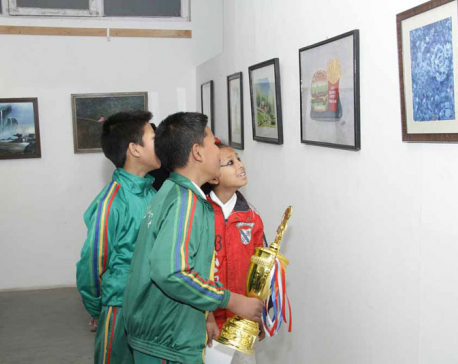
Alfesco Open Art Exhibition begins at Nepal Art Council
KATHMANDU, Feb 14: Alfresco Media and Event organized ‘Alfresco Open Art Exhibition and Competition 2017’ for pre-primary level to college level... Read More...
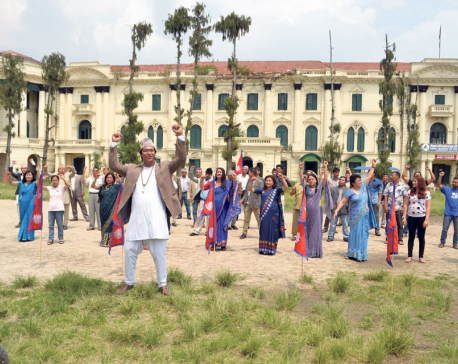
Music video promoting art
KATHMANDU: More than 80 artists were present at the ground of Nepal Academy of Fine Arts on Sunday. The reason... Read More...

A German artist turns Kathmandu’s trash into art
KATHMANDU, Sept 7: One man’s trash is another man’s treasure. For German artist Lena Koester, Kathmandu’s everyday trash is her inspiration... Read More...

Just In
- Birgunj Metropolis collects over Rs 360 million in revenue
- NEPSE plunges below 2,000 points after one and a half months; daily turnover declines to Rs 2.10 billion
- AI Index Report-2024: AI still behind humans on complex tasks like competition-level mathematics
- Daiji-Jogbudha road construction at snail’s pace
- Govt fails to adopt podway technology despite its potential in Nepal
- Jhulaghat border crossing in Baitadi to remain closed from this evening
- Universities will be free from partisan interests: Education Minister
- CIAA files cases against five, including ex-chief of Social Development Office Dolpa



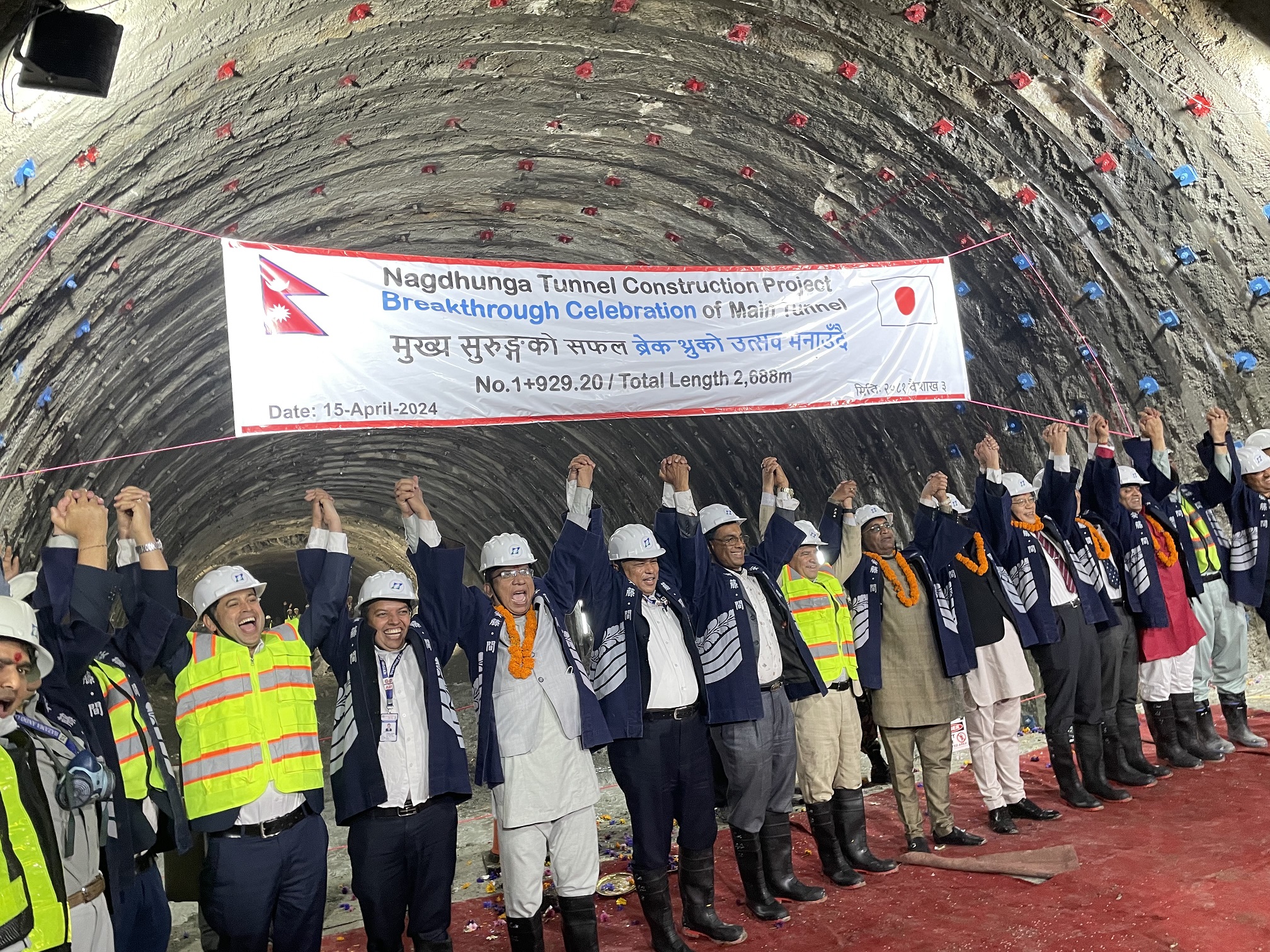













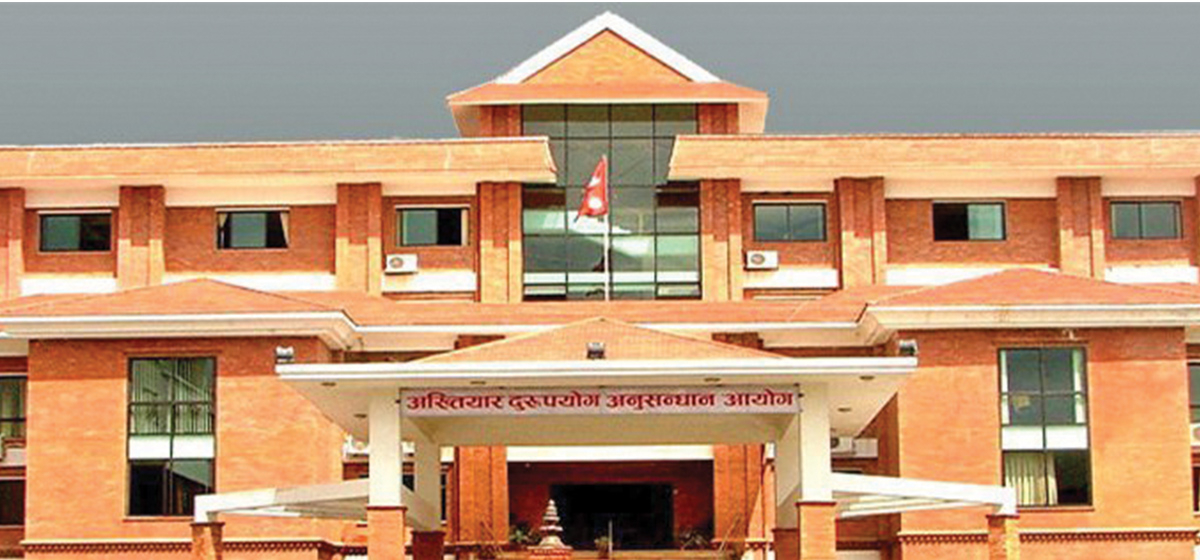
Leave A Comment